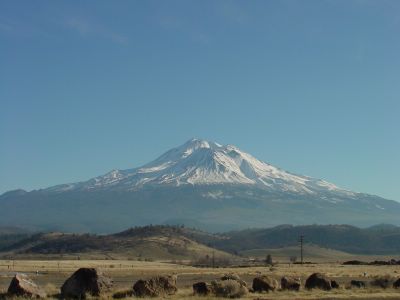
Fortunately, although hundreds have died, it looks as if the impact of yesterday's earthquake in Indonesia was not nearly as tragic as last December's quake, mainly due to the lack of an accompanying tsunami this time around. Due to the great depth (nearly 19 miles) at which yesterday's earthquake occurred, the seafloor did not pulse as much as it did last December, and relatively little wave action was generated.
The Earth moves, the oceans rise and mountains walk. Master Dogen knew this, as did the Buddhist patriarchs before him. Master Kai of Mt. Taiyo said, "The Blue Mountains are constantly walking. The stone woman bears children by night."
Master Kai, also known as Fuyo Dokai (1043-1119), was the forty-fifth patriarch from the Buddha. Having succeeded Master Tosu Gisei, Master Kai preached Buddhism on Mt. Taiyo and elsewhere, until he refused a title and a purple robe from the emperor and was banished. When he was eventually pardoned, be built a thatched hut on Mt. Fuyo and lived there in the style of the ancient patriarchs.
Master Dogen commented on this statement of Master Kai in the Sansuigyo, one of the fascicles in the Shôbôgenzô ("Treasury of the Eye of the True Dharma"). San means "mountains," sui means "waters" - rivers, lakes, and so on. Sansui then, suggests natural scenery, or Nature itself. Gyo, means Buddhist sutras. Therefore, Sansuigyo is often called "The Mountains and Rivers Sutra."
Buddhism is basically a religion of belief in the Universe, and Nature is the Universe showing its real form. So to look at Nature is to look at the Buddhist truth (dharma) itself. In Sansuigyo, Master Dogen explained the real form of Nature, giving particular emphasis to relativity in Nature.
Sansuigyo represents one of the earlier texts of the Shôbôgenzô. According to a manuscript of the work thought to be in the author's own hand, it was composed in the autumn of 1240, the year in which he seems to have begun to work in earnest on the essays that would make up his Shôbôgenzô. This was a time when Master Dogen was at the height of his literary powers, and the Sansuigyo is widely appreciated as one of the most elegant of his essays.
Several months before he wrote the Sansuigyo, Master Dogen composed another text of the Shôbôgenzô entitled Keisei sanshoku ("Sound of the Stream, Form of the Mountain"), inspired by a verse by the famed Song-dynasty poet Su Dongbo:
"The sound of the stream is his long, broad tongue;
The mountain, his immaculate body.
This evening's eighty-four thousand verses -
How will I tell them tomorrow?"
In the Sansuigyo, Master Dogen returned to the theme of this poem, to explore in detail the meaning of mountains and rivers as the very body and speech of the buddha. As he says in the opening lines, "The mountains and waters of the present are the expression of the eternal buddhas. Each abides in its own dharma state, having realized ultimate virtue."
The natural landscape that surrounds us here and now is the "expression of the eternal buddhas". The term "expression" (dô genjô) should be taken in two senses: as the words of the buddha and as his practice. In the Sansuigyo, the mountains and waters are at once preaching a sutra that reveals the dharma and themselves putting that dharma into practice.
According to Master Dogen, "Mountains lack none of the virtues with which mountains should be equipped. For this reason, they are constantly abiding in stillness and constantly walking. We must painstakingly learn in practice the virtue of this walking. The walking of mountains must be like the walking of human beings; therefore, even though it does not look like human walking, do not doubt the walking of mountains."
Mountains walk, and when they do, the Earth trembles, like it did yesterday.

1 comment:
I have to tell you that when you live amongst mountains of the kind Dogen wrote about, your interpretation of Sansuigyo changes radically. Rather than being steeped in abstract metaphor, Dogen's words "jump out" at you when a far-away mountain appears, disappears, spawns local storms, rainbows, etc.
The stillness yet impermanence of mountains and waters becomes glaringly obvious to anyone who spends a few months in, say, the Pacific Northwest, or in Japan. The Columbia Gorge can turn into an ink-painting at any time this year, and then another, and then disappear altogether.
Post a Comment